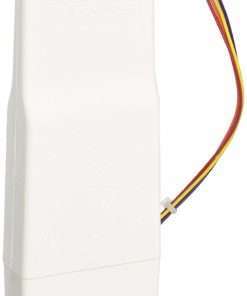What are the different types of chlorinators?
Chlorinators are devices that used to add chlorine or other chemicals to water in order to make it safe for human consumption. There are three main types of chlorinators: open-cycle, closed-cycle, and autoclave.
Open-cycle chlorinators use a constantly moving pump to distribute the chlorine throughout the system. This type of chlorinator is usually used in swimming pools and spas because it is easy to keep up with the demand for chlorine.
Closed-cycle chlorinators use a tank of chlorine gas that is constantly replenished by a pump. This type of chlorinator is usually used in hospitals and other places where high levels of chlorine are needed.
Autoclave chlorinators use heat to kill all bacteria in the water. This type of chlorinator is usually used in factories and other places where there is a risk of bacterial contamination.
How do I choose a chlorinator?
Choosing the right chlorinator for your home can be a daunting task. There are many factors to consider, including the size of your home, the type of water you use, and the needs of your specific family. Here are some tips on how to choose a chlorinator:
1. first determine what type of chlorinator you need. There are three types of chlorinators: mechanical filters, electronic filters, and activated carbon filters. Each has its own advantages and disadvantages. Mechanical filters are the cheapest and tend to be the oldest type of chlorinator available. They require regular maintenance, including replacing filters and flushing systems. Electronic filters are more expensive but typically have longer filter life spans than mechanical or activated carbon filters. They also have the ability to dispense chlorine automatically based on water quality readings. Activated carbon filters are the most expensive but also have the longest filter life span of all three types of chlorinator systems. They require no maintenance other than adding chlorine when needed.
2. next decide how large your home is and select an appropriately sized chlorinator system for your needs. Chlorinators come in two sizes: 10-gallon and 20-gallon systems. 10-gallon systems are suitable for smaller homes with up to four people living in them, while 20-gallon systems are best suited for larger homes with up to eight people living in them. Chlorinators that hold more than 20 gallons must be hooked up to a municipal water line
What are the three types of chlorine?
There are three types of chlorine: elemental, sodium hypochlorite, and bleach. Elemental chlorine is the most common type and is found in household bleach. Sodium hypochlorite is a more concentrated form of elemental chlorine that’s used as a sanitizer or disinfectant. Bleach is a mixture of sodium hydroxide (a caustic substance) and water and is used to clean surfaces or clothes.
What are the two types of chlorine?
Chlorine is a chemical compound with the formula Cl2. It is a white, gas-like substance that evaporates quickly at room temperature and has a strong odor. Chlorine is used in many industries to disinfect water, food, and other objects.
There are two types of chlorine: elemental chlorine (Cl) and hypochlorite (ClO). Elemental chlorine is made of one atom of chlorine. Hypochlorite contains two atoms of chlorine.
Hypochlorite is more powerful than elemental chlorine and can destroy more bacteria and viruses. It is also less toxic and less corrosive than elemental chlorine.


















